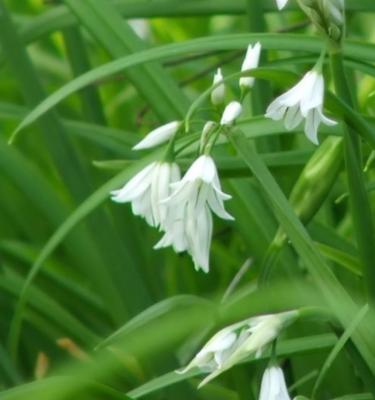

How to Get Rid of Onion Weed
“Onion Weed”, “Onion Grass” and “Wild Onion” are often used interchangeably to describe a wide range of different plants. What they have in common is that they resemble onions, either in smell or appearance, and are a weed as they grow in places where they are not wanted.
Let’s look at the species of onion weed often found in Australian gardens, and the everyday names which are sometimes used for them:
Allium neapolitanum. Also known as Neapolitan Garlic, Naples Garlic, Naples Onion, Daffodil Garlic, False Garlic, Flowering Onion, Guernsey Star-of-Bethlehem, White Garlic and Wood Garlic.
- Allium triquetrum. Commonly called three-cornered leek, or three-cornered garlic.
- Allium vineale. This is known as Wild garlic, crow garlic, stag’s garlic.
- Asphodelus fistulosus. Also called Asphodelus tenuifolius, onion-leafed asphodel, hollow-stemmed asphodel and pink asphodel.
- Bulbine semibarbata. Often referred to as leek lily, native leek, or wild onion.
- Nothoscordum spp. Includes Nothoscordum × borbonicum, Nothoscordum fragrans, Nothoscordum gracile, Nothoscordum inodorum, false onion weed, fragrant false garlic, and honeybells.
- Romulea spp. Includes Romulea minutiflora and Romulea rosea. Also known as onion grass, small-flowered onion grass, Guildford grass, and rosy sandcrocus.
- Trachyandra divaricata. Sometimes called Anthericum divaricatum, and commonly as dune onion weed.
Some of these are more challenging to remove than others. It helps to understand how to identify each one so that the best treatment can be used to get rid of it.
Onion grass identification
Each onion weed has different characteristics which help to distinguish it from others. The colour of the flower, height of the plant, and smell of the leaves are good indicators of the type of onion grass present.
Allium neapolitanum. Look for an underground bulb up to 2cm in diameter, and a stem which is round if cut across. The pretty white flower resembles an umbrella shape.
Allium triquetrum. The most telling feature of this plant is the flower stalk, which has three corners. It grows to 60cm tall and has a strong garlic smell. It has delicate bell-shaped flowers, and each of the five white petals has a green stripe along it.
Allium vineale. This plant also has an underground bulb of up to 2cm in diameter, but additionally produces much smaller bulbils amongst the flowers. It tends to be taller than other Allium onion weeds, reaching up to 1.2 metres in height. It has a strong garlic smell and the leaves are hollow.
Asphodelus fistulosus. The leaves of this plant make it look like an onion, but it is not related, and does not smell like an onion or have a bulb. It has hollow stem and leaves - ‘fistulosus’ derives from the Latin ‘fistula’, meaning pipe-like. The leaves have a pointed tip, and the plant grows to 70cm tall. It has a white flower with a dark pink stripe along each of the six petals. At night or when light is poor, the flowers will close, but the humbug-like pattern is still visible. The flowers appear from June to November, and the plant thrives in warm and dry conditions.
Bulbine semibarbata. Native to Australia, up to 45cm high and distinguishable from other types of onion weed by having yellow flowers.
Nothoscordum spp are related to true onions, but have no discernible onion smell. Nothoscordum inodorum and Nothoscordum × borbonicum have white or very pale pink flowers with six petals, which appear in spring and summer. The plants have strappy, waxy leaves, and can grow up to 1 metre tall. They have a single white bulb of up to 2cm in diameter, with lots of bulbils attached.
Romulea spp. Not related to onions, it has a perennial underground corm, which looks like but is not a bulb. It grows up to 20cm tall, with tip-pointed flat leaves and distinctive pink or purple flowers with six petals and a yellow ‘throat’. Flowers August to November.
Trachyandra divaricata. White flowers with a dark stripe along each of the six petals, which also have two distinctive yellow dots near the base. Strappy and rough-to-touch leaves, the plant is quite squat, and has no noticeable onion smell. Flowers in winter and spring, and is most commonly found in coastal areas.
How to get rid of onion weed
Removing onion weed from the garden can be challenging, but we will look at the best ways to achieve it, including killing onion weed naturally.
Allium spp. These plants spread by seed and bulbils. Dig out individual plants before they have a chance to flower, or crowd out by planting bigger and more vigorous plants. Onion weed killer can be used, however a natural approach is usually far more effective for this type of onion weed.
Asphodelus fistulosus. This plant has very thick and fleshy roots which are hard to dig up, so if doing this, make sure to collect and destroy even the smallest sections of plant material. Wear gloves when handling as it can cause a skin reaction. Seeds will survive for many years, so it is very challenging to eradicate, but diligently persevere and the plant will eventually be killed.
Bulbine semibarbata. Easy to control the spread of, remove plants by hand or use an appropriate herbicide.
Nothoscordum spp. This is another difficult onion weed to get rid of, and is best killed with a herbicide. It is often found in lawns, so use an onion weed killer containing Iodosulfuron each winter, as this will not damage most grass types. However, check the label carefully to ensure it is suitable for your lawn, and expect to apply the herbicide several times. Mowing will have little effect on this onion weed, and removal by hand can worsen the problem, as the bulbils will easily fall away when disturbed. You can try using a trowel to remove the bulb, bulbils and soil, but will need to dispose of it away from the garden so that seeds are not redistributed.
Romulea spp. Mostly spread by seed, although has a perennial corm in the soil. Remove plants by hand before they have a chance to flower, and expose corms in flower beds to sunlight so that they dry out. Romulea in lawns can be weakened by frequent mowing, and it is susceptible to herbicides, so control the spread with a weedkiller such as Scotts Lawn Builder™ Weed, Feed & Green Up Liquid Lawn Fertiliser.
Trachyandra divaricata. Spreads by seed and fibrous rhizomes. Remove single plants from flower beds by hand. In lawns, mow frequently which will weaken the plant. A weedkiller can also be used, such as Scotts Lawn Builder™ Buffalo Weed, Feed & Green Up Liquid Lawn Fertiliser.
Mulching flower beds can help to suppress onion weed growth. Remove as detailed above, and then apply a thick layer of compost or Debco® Natural Designer Mulch.
Onion grass vs onion weed
The terms ‘onion weed’ and ‘onion grass’ are often used interchangeably. However only Romulea rosea is really ‘onion grass’, although it is also sometimes considered an ‘onion weed’!
Tips for onion weed control
Most onion weeds store energy in underground corms or bulbs, making them a formidable weed to eradicate in the lawn. To avoid onion weed appearing in your lawn, prevention is always better than cure, as it can be difficult to treat the problem without damaging the surrounding grass.
Care for your lawn so that the grass is maintained in a healthy condition, and able to hold its own against competing plants. Most onion weeds are opportunistic plants, and will take hold more easily in a threadbare lawn. Use Scotts Lawn Builder™ Lawn Thickener Lawn Seed to encourage thick, healthy grass, which will mean there is less space for onion grass seed to establish.
Feed the lawn regularly using Scotts Lawn Builder™ All Purpose Slow Release Lawn Fertiliser, applied with Scotts® EasyGreen Broadcast Fertiliser Spreader. Water regularly and remove thatch to improve air circulation at soil level, which will help the grass to retain its vigour.












